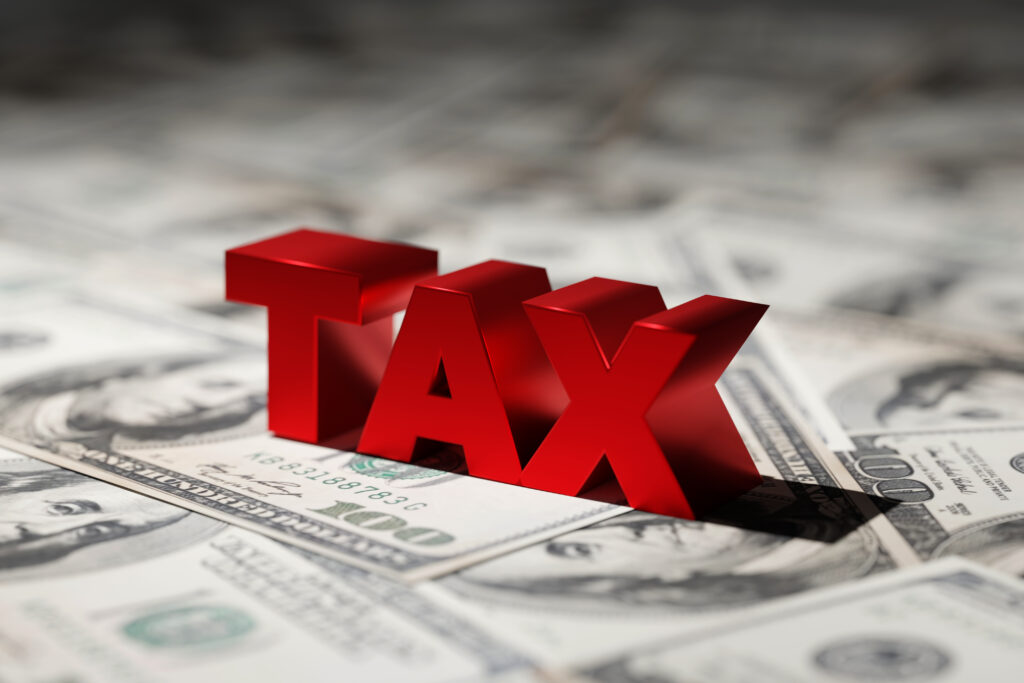If property taxes are cut in Indiana, one alternative for local governments is to raise the local income tax. (Getty Images)
Property tax cuts continue to be a topic in Statehouse circles and among local leaders. Calls to further reduce the growth in property tax collections or reduce property tax collections below current levels, will require a reduction in expenditures or an increase in local income taxes.
It is important to remember that those property tax collections fund salaries for police officers, firefighters, jailers, teachers, prosecutors, public defenders, court employees, local road departments and the operation of government buildings including school buildings.
Starting in 2020, abnormal, temporary market forces created an atypical growth in home values resulting in shifts in who is paying the property tax burden. Home values, increasing faster than the values of other classes of property, paid a larger portion of the property tax liability pie.
Property taxes in the tax reform spotlight
Recognizing those changes, the General Assembly with approval of the Gov. Eric Holcomb, took action through an expanded homestead credit and supplemental deduction to decrease the property tax liability of homesteads, shifting some of the property tax burden back to other classes of property. Some actions by the state slowed the growth in property tax collections to the benefit of all property owners through a lower levy increase.
However, I have yet to attend a public meeting where the public is asking for less spending for the services that are funded through property taxes. Is anyone asking for fewer police officers, larger student-teacher ratios or slower responses to 911 calls? With less property tax collections, those are some of the options.
The most likely replacement revenue if property taxes are cut significantly is the local income tax. Changing the funding of local services to income taxes sounds easy but the local income tax presents its own transparency issues and shifts in tax liability.
In most counties, the county fiscal body, which is the county council, adopts a local income tax rate that every resident of the county pays. However, distribution of revenue from the local income tax is not determined by the adopting body, usually the county council, rather it is distributed by a state mandated formula allowing entities who never vote for a tax increase to receive more tax revenue. This creates a transparency issue.
Transparency and unfairness
In the counties where the county council does not have the power to increase the local income tax but the authority rests with a multitude of fiscal bodies of the municipal and county governments, a taxpayer could encounter a scenario where a unit of government which they do not elect can increase their income tax. That is more than a transparency issue, it is a question of taxation without representation. Changes to the local income tax are needed if local units of government are expected to replace property taxes with income taxes.
Also, workers who are employed outside of their county of residence create government expenditures in their county of employment such as the need for better roads and more public safety; however, the out-of-county workers are not contributing to the funding of government services. A business property owner that attracts employees outside of the county is paying property taxes; however, if the business owner has a reduced property tax burden the residents of the county where the business is located will end up paying higher property taxes or face the potential for a higher local income tax.
The same is true for communities that have secondary homes or rental property. If the owner of rental property or a secondary vacation home receives a property tax cut but does not pay income taxes in the county where the property is located, the residents of the county will most likely pay higher property tax rates or income tax rates.
Previous substantial property tax relief has included the state paying for more services such as school funding and welfare costs. We recognize that the property tax system has flaws but so does the local income tax.
A balance is needed and abandoning the property tax system will not create the perfect system for funding local services. Local units of government recognize the need for balance between property taxes and local income taxes to fund local services and they should be trusted to listen to their voters.
GET THE MORNING HEADLINES DELIVERED TO YOUR INBOX

